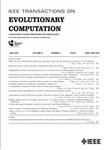版权所有:内蒙古大学图书馆 技术提供:维普资讯• 智图
内蒙古自治区呼和浩特市赛罕区大学西街235号 邮编: 010021

作者机构:Xiangtan Univ Hunan Engn Res Ctr Intelligent Syst Optimizat & Se Key Lab Intelligent Comp & Informat Proc Minist Educ China Xiangtan 411105 Hunan Peoples R China Xiangtan Univ Key Lab Hunan Prov Internet Things & Informat Secu Xiangtan 411105 Hunan Peoples R China De Montfort Univ Sch Comp Sci & Informat Leicester LE1 9BH England Univ Exeter Dept Comp Sci Exeter EX4 4QF England
出 版 物:《IEEE TRANSACTIONS ON EVOLUTIONARY COMPUTATION》 (IEEE Trans Evol Comput)
年 卷 期:2024年第28卷第1期
页 面:267-280页
核心收录:
学科分类:0808[工学-电气工程] 08[工学] 0812[工学-计算机科学与技术(可授工学、理学学位)]
基 金:National Natural Science Foundation of China FLF [MR/X011135/1] Funding Source: UKRI
主 题:Statistics Sociology Optimization Convergence Sun Evolutionary computation Computer science Coevolutionary algorithm constrained multiobjective optimization constraint handling
摘 要:In science and engineering, multiobjective optimization problems (MOPs) usually contain multiple complex constraints, which poses a significant challenge in obtaining the optimal solution. This article aims to solve the challenges brought by multiple complex constraints. First, this article analyzes the relationship between single-constrained Pareto front (SCPF) and their common Pareto front (PF) subconstrained PF (SubCPF). Next, we discussed the SCPF, SubCPF, and unconstraint PF (UPF) s help to solve constraining PF (CPF). Then, further discusses what kind of cooperation should be used between multiple populations constrained multiobjective optimization algorithm (CMOEA) to better deal with multiconstrained MOPs (mCMOPs). At the same time, based on the discussion in this article, we propose a new multipopulation CMOEA called MCCMO, which uses a new cooperation mechanism. MCCMO uses C+2 (C is the number of constraints) populations to find the UPF, SCPF, and SubCPF at an appropriate time. Furthermore, MCCMO uses the newly proposed activation dormancy detection (ADD) to accelerate the optimization process and uses the proposed combine occasion detection (COD) to find the appropriate time to find the SubCPF. The performance on 32 mCMOPs and real-world mCMOPs shows that our algorithm can obtain competitive solutions on MOPs with multiple constraints.